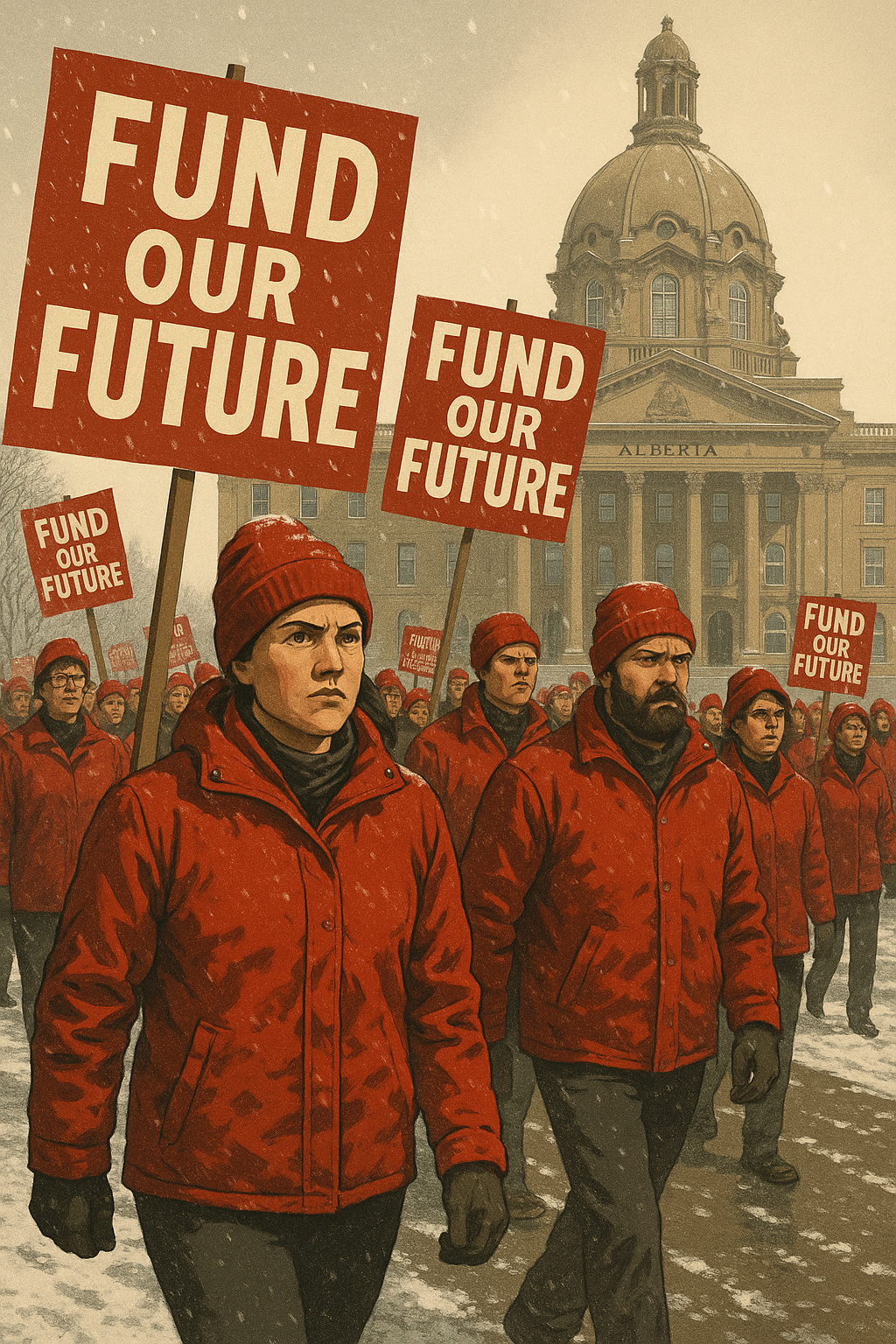
Locked Out of Learning: Alberta’s Teachers Strike Shuts Down Schools, Exposing a Crisis in the Classroom
Share
In a province that fuels the nation, Alberta’s classrooms have gone dark. On October 6, 2025, the sound of learning was replaced by the rhythm of protest boots on frozen pavement as 51,000 teachers walked off the job — the first province-wide strike in over twenty years. Overnight, 730,000 students were left in limbo, parents scrambled, and Canada’s wealthiest energy province found itself unable to power its own education system.
This isn’t just a labour dispute. It’s a battle for the soul of public education — where teachers are demanding respect, not just raises, and where Premier Danielle Smith’s government is gambling that parents’ frustration will outlast the picket lines.
A Province at War With Its Own Classrooms
The strike didn’t erupt overnight. The Alberta Teachers’ Association (ATA) had been sounding the alarm since early 2025 — overcrowded classrooms, chronic underfunding, and a decade of wage stagnation. A 99% strike authorization vote in June wasn’t a cry for attention; it was a scream for survival.
When the government’s September deal — a 12% raise over four years and vague promises of new funding — was rejected by nearly 90% of teachers, the message was clear: token gestures don’t fix broken systems. ATA President Jason Schilling put it bluntly: “Teachers aren’t walking out on students. They’re walking out on neglect.”
The Government’s Playbook: Optics Over Outcomes
Premier Smith’s team insists Alberta’s education budget has grown — technically true, but deceptive in practice. A 4.5% funding bump in 2025 can’t keep up with inflation, population growth, or the surging complexity of modern classrooms. Alberta now ranks dead last in Canada for per-student spending, at under $12,000 per pupil.
Meanwhile, the province boosted private school funding by 13%, a move critics call ideological favoritism. It’s a tale as old as bureaucracy — when governments tighten belts, it’s always the classrooms that suffocate first.
Families in Freefall
While politicians posture, families pay. Parents juggle jobs, kids, and uncertainty. With schools shuttered, cities scramble to open makeshift childcare programs. Online learning tools like D2L are activated but unmanned, leaving students without teachers or feedback.
The fallout ripples through the economy — absenteeism rises, small businesses struggle, and working parents burn through vacation days. A generation already bruised by pandemic disruptions now faces another forced pause in their education.
Public Anger Hits Boiling Point
Social media is ablaze. Teachers rally under the banner “Fund Our Future”, while critics accuse unions of greed. In truth, both sides are fighting over a collapsing bridge: the future of education itself.
Albertans are witnessing a cultural shift — one that forces the uncomfortable question: if we can subsidize oil, bail out banks, and hand out corporate tax breaks, why can’t we properly fund classrooms?
The Real Cost of Austerity
Beyond the politics lies a grim reality: fewer teachers mean larger classes, less attention for students with disabilities, and burnt-out educators leaving the profession. Alberta’s education system, once a source of pride, now teeters on the edge of dysfunction.
As the lockout looms, one thing is certain — both sides will claim to fight “for the kids.” But empty desks tell the truth. The lesson Alberta’s government seems to have forgotten is that education isn’t an expense. It’s an investment — the kind that defines a nation’s future.
If Alberta wants to be more than a cautionary tale, it’s time to pick a side — the side of the children sitting at home, waiting for the sound of the bell to return.
